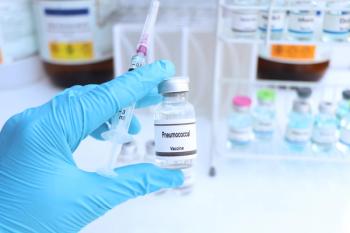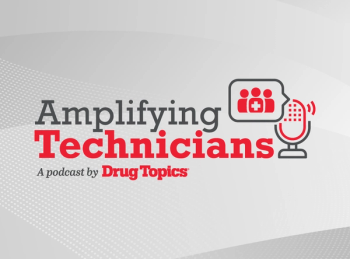
Short-Term Use of CGM Improves Outcomes for Patients With Type 2 Diabetes
Investigators emphasize the importance of proper education regarding diabetes and continuous glucose monitors.
The introduction of a continuous glucose monitor (CGM) system can significantly improve diabetes self-management and outcomes for patients with complex type 2 diabetes (T2D), according to results in a study published in Diabetes & Metabolic Syndrome: Clinical Research & Reviews.1
“In this study we found that despite their complex health needs, the majority of those who consented to take part exhibited high levels of patient activation at the start of the study and a willingness to engage with CGM and diabetes self-management,” the study investigator said.1 “This willingness to engage with CGM and other more general self-management behaviours led to a significant improvement in diabetes self-management, evidenced by the improved DSMQ score, along with significantly improved glucose control, evidenced by a reduction in HbA1c and improved time in glycaemic range.”
Diabetes is a chronic metabolic disease that could be caused by impaired insulin secretion, resistance to insulin, or both. Diabetes can cause damage to different organ systems and is a risk factor for other diseases, such as cardiovascular disease and other cardiometabolic diseases. T2D accounts for approximately 90% of all diabetes cases and is classified as the body being resistant to insulin. It is most common for patients 45 years and older but continues to rise in children, adolescents, and younger adults.2
CGMs help patients manage diabetes, especially because data can be received 24 hours daily. It can track changing glucose levels, especially after eating or physical activity, which affects glucose levels. Some CGMs are used with insulin pumps that offer automated delivery systems, and some people use CGMs beyond diabetes, including for prediabetes and obesity.3
Investigators of the current study aimed to assess whether the short-term use of CGMs altered patients’ self-management behavior. Further, they assessed whether CGM usage could alter diabetes-related quality of life and emotional well-being. Patients included had established T2D and were receiving care from a specialist diabetes team due to complex needs either related or unrelated to diabetes. The study was a randomized, crossover study that lasted 36 weeks—including 2 sequences of 12-week periods and a 12-week follow-up period. In the first sequence, patients received their usual care followed by 12 weeks of CGM use. In the second sequence, patients followed the reverse order. This was followed by a 12-week follow-up period without CGM usage.1
Investigators included 51 individuals in the study, with 25 in sequence 1 and 26 in sequence 2. A total of 37 patients attended the final visit, with 16 from sequence 1 and 21 from sequence 6. Nine patients withdrew from the study, and 5 were lost to follow-up. Approximately 63.7% of all participants were male and had a mean age of 59.7. Approximately 96.1% were white.1
At the time of treatment randomization, there was no difference between the groups in mean Diabetes Self-Management Questionnaire score, and in total, 57% of patients had an improved score following CGM use. For those who finished the study, 73% of patients had an improvement in score. As for quality of life and emotional well-being, there was a significant improvement from 0.59 in the Audit of Diabetes-Dependent Quality of Life score to 1.25 after CGM use. Furthermore, investigators found that following the CGM use, mean hemoglobin A1c reduced from 10% to 8.8%, and the time in range increased significantly from 29.6% to 38.1% following the 12-week CGM period.1
However, investigators also added that there was a lot of missing or incomplete data included in the self-management plans that patients turned in at the end of the study, which emphasizes the need for education on CGMs and diabetes.1
“The benefits reported in this study were seen whilst ‘active’ CGM was being used and it is noticeable that the greatest benefits were achieved when education and CGM were used in combination,” the investigators concluded.1 “Once CGM was discontinued, improvements in self-management behaviour and HbA1c started to diminish, suggesting diabetes education on its own was not sufficient to sustain continuous self-management behaviour and glucose management.”
READ MORE:
Ready to impress your pharmacy colleagues with the latest drug information, industry trends, and patient care tips? Sign up today for our
REFERENCES
1. Parsons SN, Luzio SD, Dowrick SC, et al. Does the short-term use of continuous glucose monitoring enhance diabetes self-management behaviour in type 2 diabetes? The DISCO GM Study: A randomised, controlled cross-over study. Diabetes Metab Syndr. Published online August 14, 2025. doi:10.1016/j.dsx.2025.103283
2. Goyal R, Singhal M, Jialal I. Type 2 Diabetes. [Updated 2023 Jun 23]. In: StatPearls [Internet]. Treasure Island (FL): StatPearls Publishing; 2025 Jan-. Available from: https://www.ncbi.nlm.nih.gov/books/NBK513253/
3. Cleveland Clinic. Continuous glucose monitoring (CGM). Updated May 24, 2024. Accessed August 26, 2025. https://my.clevelandclinic.org/health/articles/continuous-glucose-monitoring-cgm
Newsletter
Pharmacy practice is always changing. Stay ahead of the curve with the Drug Topics newsletter and get the latest drug information, industry trends, and patient care tips.






































































































































